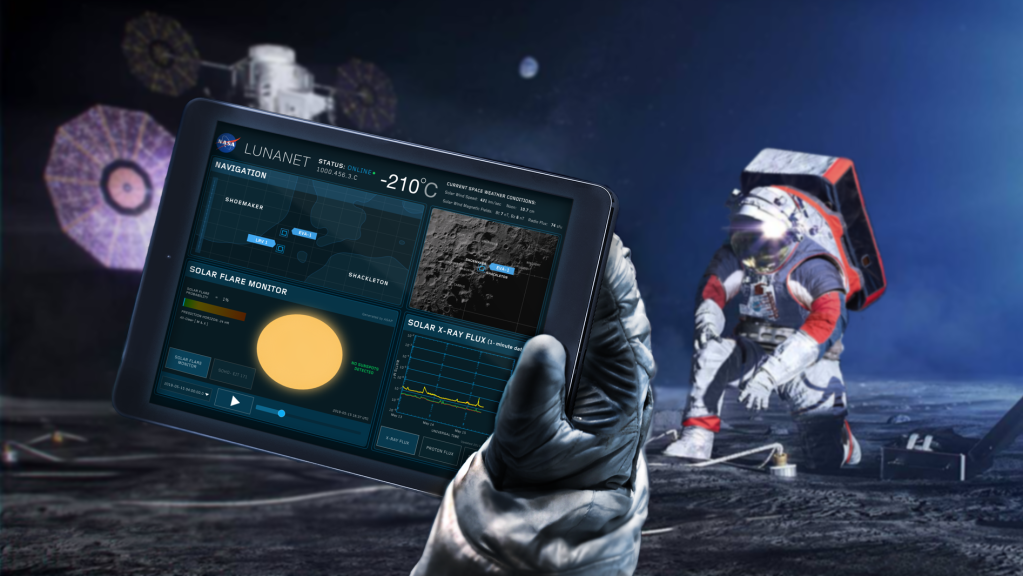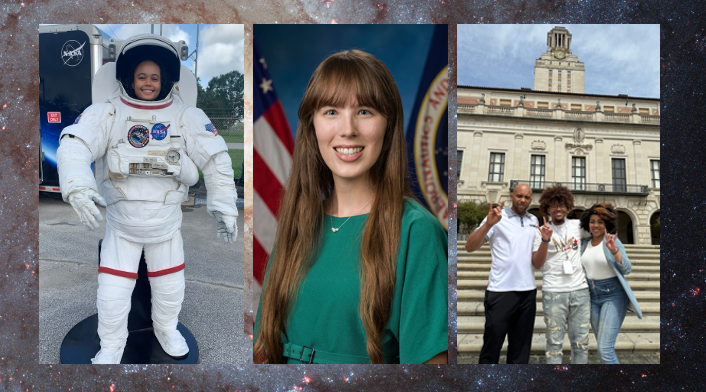


SCaN (Space Communications
and Navigation)
NASA SCaN (Space Communications and Navigation) is the program office for all of NASA’s space communications operations. SCaN’s Near Space Network (NSN) and Deep Space Network (DSN) enable more than 100 NASA and non-NASA missions to explore the unknown, innovate for the benefit of humanity, and inspire the world through discovery.
and Navigation)
Our Vision
SCaN aims to build and maintain a scalable integrated mission support infrastructure that can readily evolve to accommodate new and changing technologies, while providing comprehensive, robust, cost-effective and exponentially higher data rate space communications services to enable NASA's science, space operations and exploration missions.
Learn More about Our Vision
Focus Areas
SCaN provides communications and navigation services that are essential to the operation of NASA's spaceflight missions. Accordingly, SCaN has developed goals and objectives that support the program's role in the agency's long-term strategy.

Communications Services Project
CSP aims to deliver innovative capabilities to meet NASA mission needs, while simultaneously supporting the growing commercial space communications market in the United States.

Our Networks
Through our two networks, the Near Space Network and the Deep Space Network, SCaN enables over 100 NASA and non-NASA missions, including those close to home and those exploring beyond our solar system.

Commercialization
SCaN is transforming its near space communications services and seeking to engage the commercial industry for both Direct-to-Earth and space relay communication services.

GPS and PNT Policy
SCaN leads in the development of NASA’s overall navigation capability through spectrum coordination, data standards development, external coordination, and appropriate systems engineering, architecture development, and research and development of GPS applications.

Services and Scheduling
SCaN offers a comprehensive set of standard services based upon its charter to provide communications and navigation for its customers from launch through the entire mission life cycle.

Spectrum Management
Virtually every endeavor that NASA undertakes requires communications or data transfer via the electromagnetic spectrum. NASA relies solely on the SCaN program to provide this vital service to all of its missions.

Systems Engineering and Technology
SCaN is at the forefront of space communications and navigation technology development, pushing the boundaries of what's possible to better enable space and science missions.

Optical Communications
NASA is developing optical, or laser, communications to address limitations of radio frequency communications, including: bandwidth, spectrum and overall size of frequency packages and power used.

Quantum Communications
Rapid advances in quantum optics have recently enabled space-based demonstrations of new communications and networking technologies and protocols.

Outreach
SCaN supports NASA's education goal of promoting Science, Technology, Engineering and Math (STEM) education.
LunaNet Interoperability Specification
The purpose of the LunaNet Interoperability Specification (LNIS) is to define a framework of mutually agreed-upon standards and interfaces that…
Read the Story
Getting to Know SCaN
Our Impact
From enabling the transfer of ground-breaking images and data from space to the scientific community, to the dissemination of new communications technologies to the public, NASA's SCaN program has made a broad and lasting impact on society.
Learn More About Our Impact about Our Impact
SCaN Internship Project
Open to students 16 and older, the SCaN Internship Project allows students to perform hands-on training with real mission scenarios, analyze powerful space communication systems, utilize network software tools, and effectively communicate their findings in a final presentation to NASA management.
Learn More
NASA Centers Supporting SCaN

NASA Headquarters
Location
Washington, DC
Founded
July 29th, 1958
People
2,463
Director
Nichole Pinkney
Glenn Research Center
Location
Cleveland, Ohio
Founded
January 23rd, 1941
People
3,200
Director
Dr. James Kenyon
Goddard Space Flight Center
Location
Greenbelt
Founded
May 1st, 1959
People
10,000
Director
Makenzie Lystrup
Jet Propulsion Laboratory
Location
Pasadena
Founded
October 31st, 1963
People
6,000
Director
Dr. Laurie Leshin
Ames Research Center
Location
Founded
People
Director
Johnson Space Center
Location
Houston
Founded
November 1st, 1961
People
11,000
Director
Vanessa E. Wyche
Stennis Space Center
Location
Stennis Space Center
Founded
October 25th, 1961
People
5,200
Director
John Bailey
Marshall Space Flight Center
Location
Huntsville, AL
Founded
July 1st, 1960
People
7,000
Director
Joseph Pelfrey
Kennedy Space Center
Location
Kennedy Space Center, Florida
Founded
July 1st, 1962
People
10,000
Director
Janet Petro
NASA Langley Research Center
Location
Hampton, VA
Founded
October 2nd, 1964
People
3,400+
Director
Acting Director Trina Dyal
Artemis I: Demonstrating the Capabilities of NASA’s United Networks
Editor’s note: This feature was updated on June 23, 2021 to reflect a reorganization of NASA network assets. On our journey…
Read the Story
















































